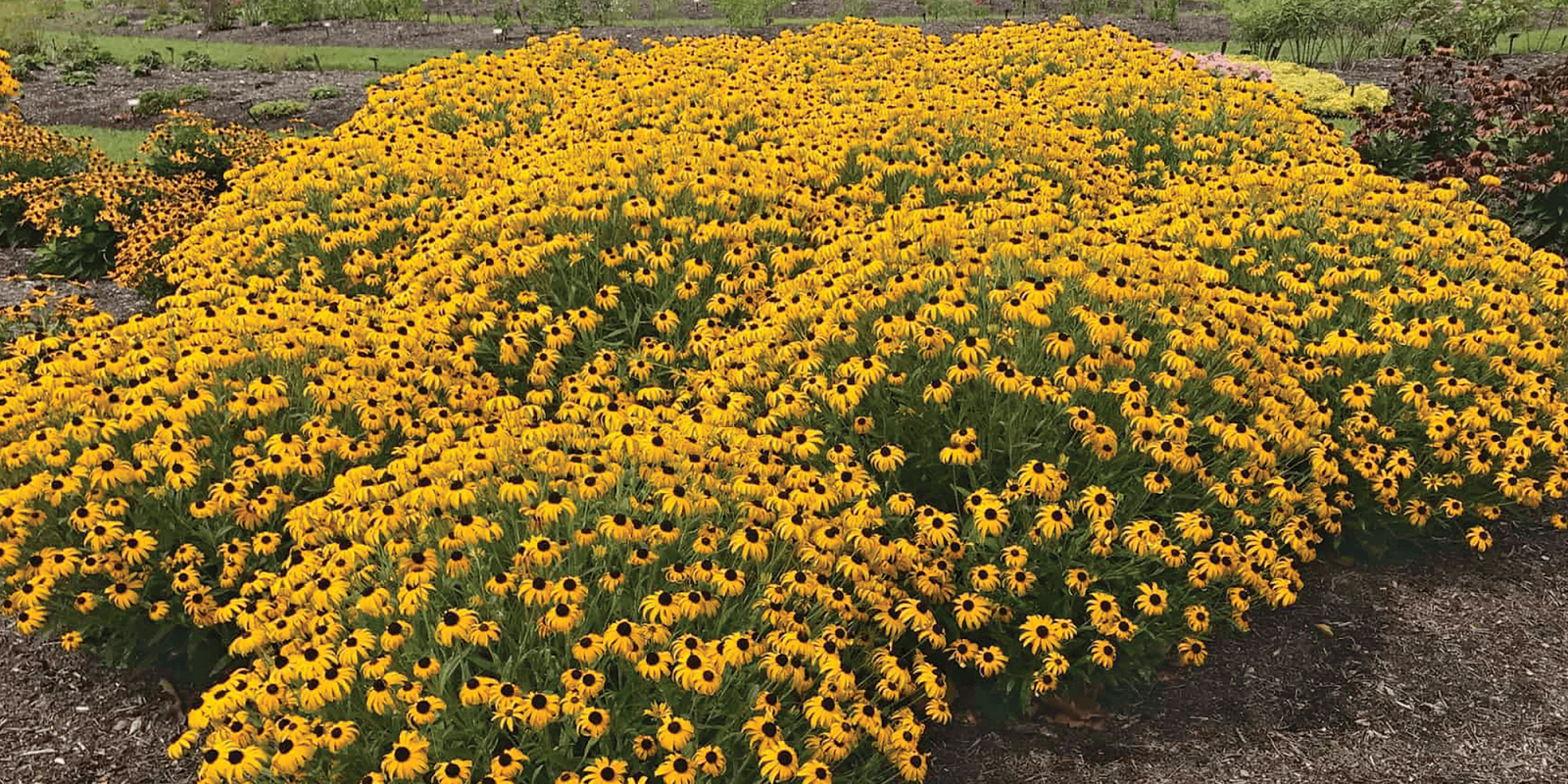October 12, 2022

Rubeckia American Gold Rush
2023 Perennial Plant of the Year
The Perennial Plant Association (PPA) announced Rudbeckia ‘American Gold Rush’ as Perennial Plant of the Year for 2023. The black-eyed Susan originated from open-pollinated seed sown from the seed parent Rudbeckia fulgida var. Deamii, and was introduced by Brent Horvath from Intrinsic Perennial Gardens.
Horvath said, “I’ve always liked my plant introductions to speak for themselves and this one speaks volumes. From start to finish this plant is generally trouble free and easy to propagate, grow and finish in a container and a breeze to garden with. It started as an open-pollinated seedling among several other related seedlings, but quickly distinguished itself with clean disease-free foliage, a naturally compact and rounded habit and beautiful presentation in a container over an extended bloom period.”
In a media release, PPA said, “At the height of summer, ‘American Gold Rush’ black-eyed Susan turns up the volume for a long season of dazzling colour right up to autumnal frosts. The bright golden-yellow flowers feature arching rays and a reddish halo surrounding dark chocolate cones. Three-inch flowers blanket the compact plant, only 22-27 inches tall with a broader width to 40 inches if given room to grow.
“The green leaves and stems are covered in hairs, which gives them a silvery cast — on sunny days, peeking through the blooms to the leaves is a luminous silver-and-gold treat. More than just boosting the ornamental show, the hairy foliage is resistant to Septoria leaf spot — a debilitating fungal disease that causes unsightly black spotting and premature seasonal decline on some black-eyed Susans. ‘American Gold Rush’ is a reliable hardy perennial and a great substitute for popular, brassier ‘Goldsturm,’ which is highly susceptible to leaf spotting. ‘American Gold Rush’ is a stunning focal point in perennial borders and meadows and is brilliant when massed in public or corporate landscapes. Butterflies caper over the blooms and songbirds feast on the plentiful seed long after the flowers have passed — the seedheads provide winter interest too.”